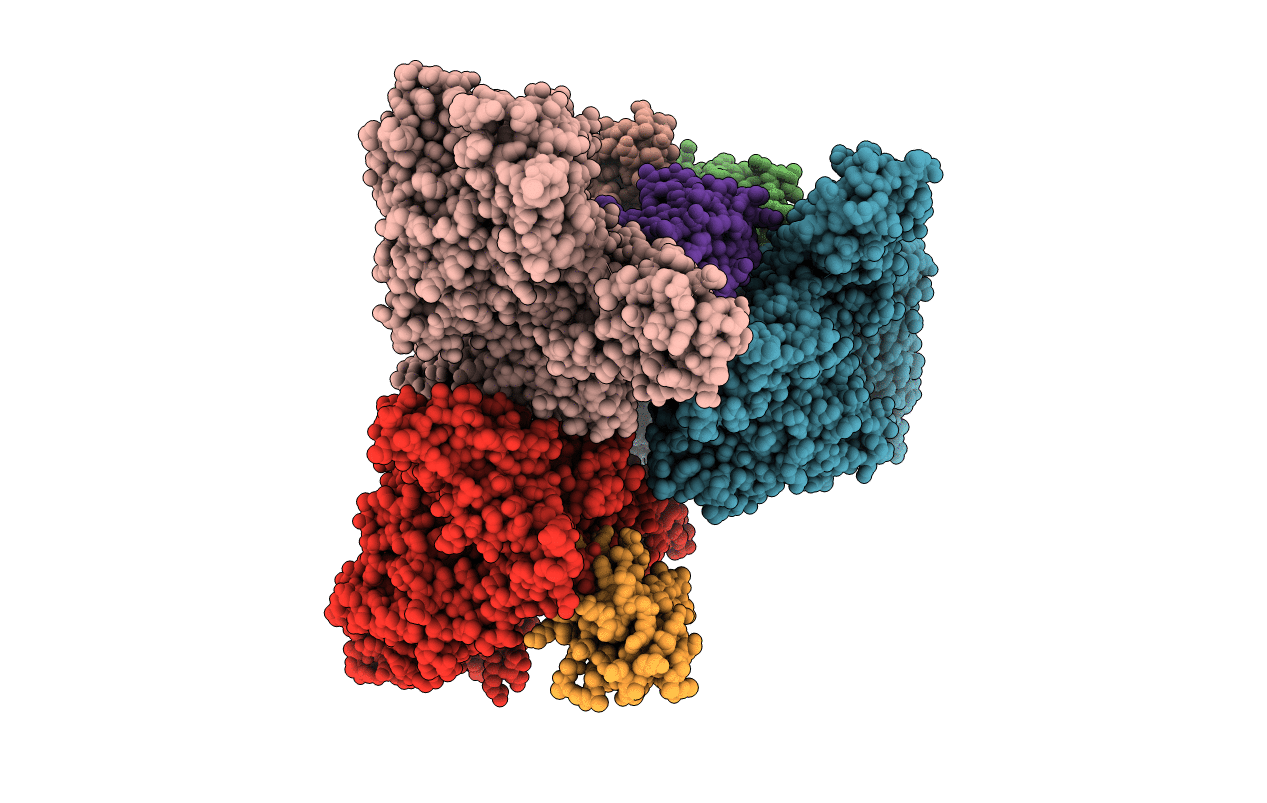
Deposition Date
2020-09-24
Release Date
2020-10-14
Last Version Date
2024-11-20
Entry Detail
PDB ID:
7K7Y
Keywords:
Title:
Crystal structure of BoNT/E LC-HN domain in complex with VHH JLE-E9
Biological Source:
Source Organism:
Clostridium botulinum (Taxon ID: 1491)
Vicugna pacos (Taxon ID: 30538)
Vicugna pacos (Taxon ID: 30538)
Host Organism:
Method Details:
Experimental Method:
Resolution:
3.60 Å
R-Value Free:
0.28
R-Value Work:
0.26
R-Value Observed:
0.26
Space Group:
P 21 21 21


